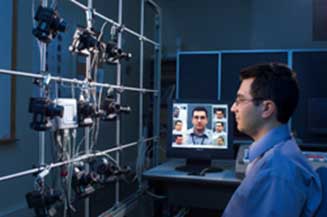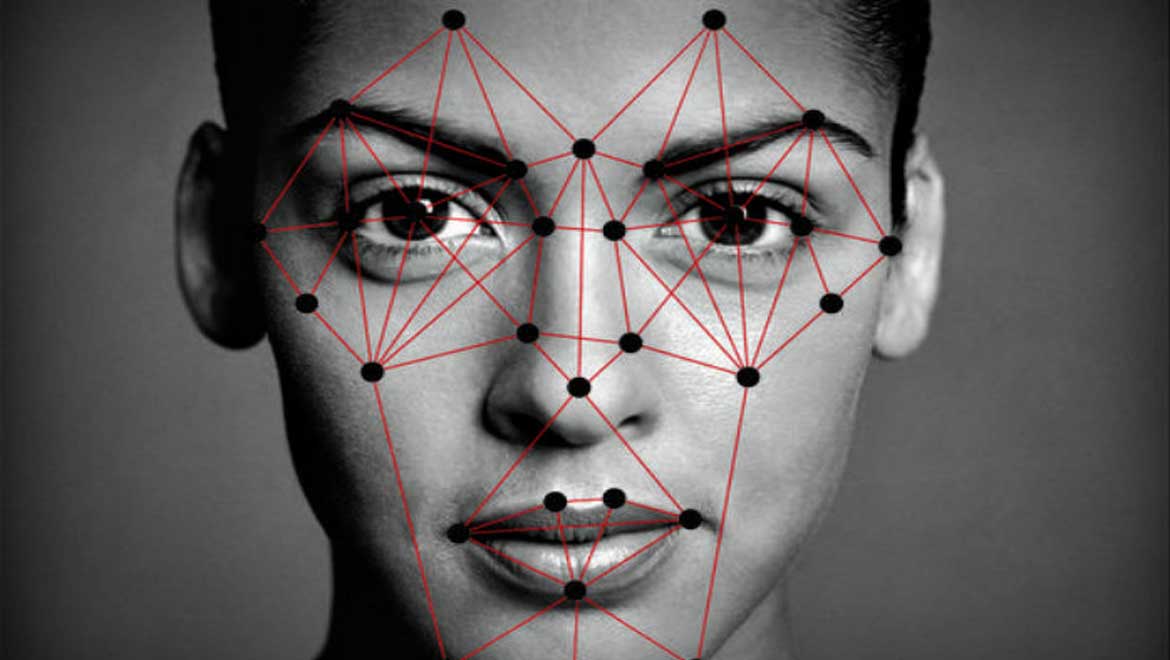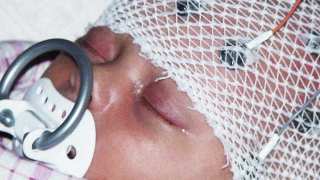Synthetic facial recognition is demonstrably making the transition from action or spy movies to real life. This technological revolution is based on the ability of cameras to pick up the image of a face to process, analyse and ultimately identify people based on their facial characteristics. Companies such as NEC believe that computerised facial recognition can form the backbone of a modern security system, be they public or corporate. In other words, NEC aims to transform workplaces, transport hubs and other spaces with significant foot travel on a regular basis into surveillance zones where people are evaluated for lawfulness based on high-tech selfies. But is facial recognition really the best way forward?
NEC’s latest foray into the facial recognition-powered security space is called the NeoFace® range of technology. The company claims that this new line of facial recognition solutions and suites can capture, recreate and analyse facial data with enhanced accuracy compared to earlier alternatives. NEC claims that their new software can match faces to identities, even when using or extrapolating poor-quality or low-resolution photos. Some NeoFace applications can also capture faces in real-time, for comparison with existing databases. NEC also claim that their technologies can be integrated into existing camera systems, whereas other products in this line are for specific applications, such as forensic science. For example, NeoFace® Match adds facial image detection, processing and encoding to existing systems used for face-based identification.
High-End Facial Recognition on your Phone
Facial recognition is already built into some high-end smartphones as an unlocking option. NEC offers an even more high-tech option for our portable screens. However, NEC’s NeoFace Smart ID claims to offer a more high-end, targeted application for tablets and smartphones. This software offers facial recognition with extra dimensions of accuracy and data-recording, as well as the integrated collection of identifying data. This might include fingerprints, vocal patterns and demographic data. ‘Smart ID’ can then send this data to a unified database, or a local source such as a watch-list.
NEC also claim that the United States’ National Institute of Standards and Technology (NIST) have tested their NeoFace products, and found them to be the fastest and most accurate facial detectors on the market today. This range of technology can recognise and compare faces from live camera feeds or static photos. Some of their applications, such as Smart ID, can also feed their data into NIST-accredited systems from NEC or other systems. When this is done using a standard called IESB, it can access improved watch-list and authentication features. NEX are also offering their own system of management for large numbers of the same or similar devices running Smart ID.

A NIST computer scientist with a system for studying facial recognition software performance. By the National Institute of Standards and Technology - Facial Recognition, (Public Domain)
Facial Recognition and Real-World Issues
The promotion of such advanced facial data may be worrying to many, not least those who simply value their privacy. NEC advertises their products with glowingly benign aims, such as keeping public spaces safe and enhancing the identification and location of criminals. NEC also offers its services to corporate clients, ostensibly to enhance security on company premises (but just as likely to facilitate ‘time-and-motion’ studies and other forms of personnel surveillance). NEC also tout the ‘advantage’ of advanced personal identification and monitoring that is non-invasive and can be done from great distances. However, putting so much personal data into the hands of authorities or private bodies inevitably invites concerns over its abuse or misuse. In addition, there is always the possibility a system running NeoFace may be hacked, thus placing a potentially large amount of sensitive data in the crosshairs of data thieves.
Indeed, NEC may be inadvertently issuing new challenges to criminal entities who wish to subvert facial recognition systems and databases. If NeoFace can gather increasingly fine data on facial features as NEC claim, some individuals or bodies may put their minds to improved methods of occluding those properties. For example, there is an argument that facial recognition-based authentication through a smartphone’s camera can be subverted by simply holding up a photo of a particular face up to the screen. On the other hand, this could be avoided by including the enhanced detection of 3D facial data, although the NEC website does not specifically mention this. Even if facial recognition data is combined with other biometric ID data types, facial recognition may not be effective in all cases. For example, it is theoretically possible to ‘fake’ a fingerprint for the purposes of fooling sensors that collect them.
Facial Recognition and Personal Freedom
Surveillance that depends on facial recognition and tracking may also require compliance with this. In other words, it may lead to future legislation that tries to restrict facial or head coverings in public places. This implies a range of issues relating to self-expression, conforming to religious practices and increased activity of the police to enforce such laws. As NEC also offers improvements on collecting data on other, more ‘niche’ features such as scars and lesions, the use of technology such as NeoFace could become a problem on many levels. NEC also claims that facial recognition is superior to other forms of biometric identification such as iris scanning, but these advantages appear to be based on the reduced need for consent or active participation on the part of the person being assessed. That is also a worrying issue for potential subjects of this new technology.
Careful consideration needed before applying this technology
NEC’s new range of facial recognition tools and software may seem like an interesting and advanced way of ensuring personal, public or corporate security. However, it may also be distressing for those with privacy- or autonomy-related concerns. It may also increase the risk of new, criminal methods being used to subvert systems like NeoFace. It is to be hoped that companies and public bodies considering a surveillance system that incorporate this technology put some real, detailed thought into its implementation and everyday use.
Top image: Global facial recognition market to reach 24 percent CAGR by 2020. (Image Source)
References:
NEC. Face Recognition: Putting More Than Just a Name to a Face. 2017. Available at: http://www.nec.com/en/global/solutions/safety/face_recognition/index.html?cid=em-elq-27561&utm_source=elq&utm_medium=email&utm_campaign=27561&elq_cid=2826121
NEC. NeoFace SmartID Brochure. 2017. Available at: http://www.nec.com/en/global/solutions/safety/face_recognition/PDF/NeoFace_SmartID_Brochure.pdf







No comment